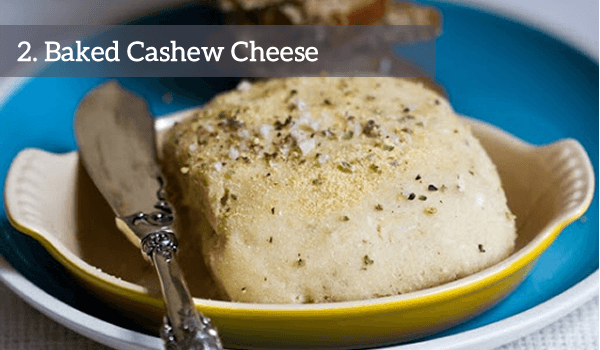
Dairy cheese contains lactose, the naturally occurring sugar in milk.

The structure of proteins and enzymes in appropriate bovine lacteal secretions differs from those in plant-based milk. Their functionalities, however, never match that of conventional dairy cheese.” A nut isn’t a cow, there’s no getting around it. Shelke says Urban Cheesecraft, Miyoko’s and similar artisanal cheesemakers produce “very good-tasting products, each with superb texture and taste. Flavor comes from culturing, while nutritional yeast adds “a pleasing funk, some umami.” Her company Urban Cheesecraft offers cheesemaking kits, both traditional dairy and plant-based “I take a whole foods approach,” says Lucero, author of One-Hour Dairy-Free Cheese. “If we break down cheese, what are we craving? Tang, creaminess, the satisfaction of fat in your mouth, that salty, umami taste.” Lucero’s vegan cheese base is a cream made from nuts, seeds or pureed beans, heated and thickened with tapioca starch and agar, a gelatinous agent made from seaweed. As with traditional dairy cheese, it’s made from cultured milk, but it’s milk from nuts or oats.Ĭlaudia Lucero takes Schinner’s original concept one step further. The only thing that’s changed is scale, with the company producing 20,000 pounds of vegan cheese per day. It still involves culturing, coagulation, brining, and aging. Schinner’s process hasn’t changed now that she runs a multimillion plant-based cheese empire. “We’re interested in producing cheese that honors the process,” says Schinner. She’s all about artisanal, going back to her 2012 book, Artisan Vegan Cheese, a DIY guide to making vegan cheese at home. Brands including Miyoko’s and Violife are producing plant-based cheeses using traditional artisanal methods. The other game-changer since Winterman’s unfortunate vegan cheese experience is the product itself. Sprinkle with chopped parsley and serve while hot.Part of the uptick is attributable to consumer desire to reduce environmental impacts. Plant-based cheese comes out a clear winner compared to dairy as far as sustainability. Sprinkle the top with the rest of the cheese and the bread crumbs and bake in the oven for about 20 minutes, or until the cheese starts to bubble and the topping goes crumbly and brown. Stir everything together and spoon into a shallow casserole dish or 4 individual large ramekins. Season to taste with salt and pepper and add to the pasta mix. Add two-thirds of both of the cheeses to the sauce while it is still hot and combine well. The sauce will thicken considerably, then remove the pan from the heat. Once the sauce has fully come together, turn up the heat and boil for a minute or two.

This normally does the trick to eliminate all the lumps! Make sure you get the spoon into the "corners" of the pan, as stray mounds of flour often lurk there. Should this happen, take the pan off the heat and whisk it like crazy. The temptation is to put all the milk in at once only to find you are left with clumps of flour floating on the surface.


This will prevent the sauce from going lumpy. Keep adding the milk mixture, bit by bit, stirring well each time. Mix the milk and cream together in a pitcher and add a little to the flour and butter in the pan, stirring well. Remove the skillet from the heat and add its contents to the pasta.įor the sauce, put the butter, flour, nutmeg, and mustard in a small pan set over medium heat and cook until the butter has melted. Drain, then return to the pan and set aside.įry the pancetta in a medium skillet over gentle heat until it just starts to brown and crisp up, then add the thyme leaves and scallions and cook for an additional 3 minutes. It needs to be cooked to just under what you would normally do, as the pasta will be cooked again in the oven. Preheat the oven to 400 degrees F (200 degrees C).Ĭook the macaroni in a large pan of boiling salted water.


 0 kommentar(er)
0 kommentar(er)
